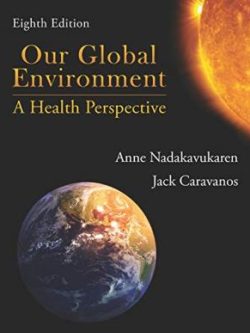Specifications
| book-author | Robert H. Friis |
|---|---|
| file-type | |
| isbn10 | 1284123979 |
| isbn13 | 9781284123975 |
| language | English |
| publisher | Jones & Bartlett |
Book Description
**”Essentials of Environmental Health” (3rd Edition)** by Robert H. Friis is a comprehensive textbook that provides a clear and concise overview of the key concepts in environmental health. This edition is designed to give students, public health professionals, and anyone interested in environmental health an accessible introduction to the subject. The book covers a wide range of topics, from the basic principles of environmental health to specific environmental hazards and their impacts on human health. Here's a detailed description:
### **1. Introduction to Environmental Health**
– **Fundamental Concepts:** The book begins with an introduction to the field of environmental health, defining key terms and concepts. It covers the history of environmental health, its importance in public health, and the role of environmental health professionals in protecting public health.
– **Scope of Environmental Health:** This section discusses the broad scope of environmental health, including the study of physical, chemical, biological, and social factors that influence human health. It also covers the interdisciplinary nature of the field, involving biology, chemistry, toxicology, epidemiology, and public policy.
### **2. Environmental Epidemiology and Toxicology**
– **Epidemiological Methods:** The book provides an overview of epidemiological methods used in environmental health research, including study design, data collection, and statistical analysis. It explains how epidemiology is used to investigate the links between environmental exposures and health outcomes.
– **Toxicology Basics:** A section on toxicology introduces the principles of toxicology, including dose-response relationships, exposure assessment, and the mechanisms of toxicity. It explains how toxic substances can affect human health and how risk assessments are conducted.
### **3. Environmental Policy and Regulation**
– **Regulatory Framework:** The book discusses the role of government agencies in regulating environmental health hazards. It covers key U.S. environmental laws and regulations, such as the Clean Air Act, Clean Water Act, and the Safe Drinking Water Act, as well as the role of agencies like the Environmental Protection Agency (EPA).
– **Policy Development:** The process of environmental policy development is explored, including how scientific evidence is used to inform policy decisions. The book also discusses the challenges of balancing economic, social, and environmental considerations in policymaking.
### **4. Air and Water Quality**
– **Air Pollution:** The book covers the sources and types of air pollutants, their effects on human health, and strategies for air quality management. It discusses indoor and outdoor air pollution, including particulate matter, ozone, and carbon monoxide, and their impact on respiratory and cardiovascular health.
– **Water Pollution:** This section explores the sources and effects of water pollution, including microbial contamination, chemical pollutants, and emerging contaminants like pharmaceuticals and microplastics. The book also covers the importance of clean drinking water, wastewater treatment, and waterborne diseases.
### **5. Environmental Health Hazards**
– **Chemical Hazards:** The book provides detailed information on chemical hazards, including pesticides, heavy metals, and industrial chemicals. It discusses their sources, routes of exposure, and health effects, as well as strategies for reducing chemical exposure.
– **Biological Hazards:** Biological hazards, including bacteria, viruses, fungi, and parasites, are covered in this section. The book explains how these organisms can cause disease, the factors that influence their spread, and the measures needed to control them.
– **Physical Hazards:** The book also covers physical hazards such as radiation, noise, and temperature extremes. It explains how these hazards can affect human health and the measures needed to mitigate their impact.
### **6. Food Safety and Environmental Health**
– **Foodborne Illnesses:** The book discusses the causes and prevention of foodborne illnesses, including bacterial, viral, and parasitic infections. It covers food safety practices, the role of government agencies in regulating food safety, and the impact of food production and processing on the environment.
– **Environmental Contaminants in Food:** The presence of environmental contaminants in food, such as pesticides, heavy metals, and persistent organic pollutants, is explored. The book discusses the health risks associated with these contaminants and the measures needed to ensure food safety.
### **7. Waste Management and Environmental Health**
– **Solid and Hazardous Waste:** The book provides an overview of solid and hazardous waste management, including the sources of waste, disposal methods, and the environmental and health impacts of improper waste disposal. It also discusses the principles of waste reduction, recycling, and sustainable waste management practices.
– **E-Waste and Emerging Issues:** The issue of electronic waste (e-waste) is covered, including the health and environmental risks associated with the improper disposal of electronic devices. The book also discusses emerging issues in waste management, such as the management of plastics and nanomaterials.
### **8. Global Environmental Health**
– **Global Environmental Challenges:** The book explores global environmental health challenges, including climate change, deforestation, and loss of biodiversity. It discusses the health impacts of these challenges, particularly in vulnerable populations, and the global efforts to address them.
– **Sustainable Development:** The concept of sustainable development is introduced, including the role of environmental health in achieving sustainable development goals (SDGs). The book discusses strategies for promoting sustainability, reducing environmental health risks, and improving public health outcomes globally.
### **9. Risk Assessment and Risk Communication**
– **Risk Assessment Process:** The book provides an introduction to the process of environmental health risk assessment, including hazard identification, dose-response assessment, exposure assessment, and risk characterization. It explains how risk assessments are used to inform regulatory decisions and public health interventions.
– **Risk Communication:** The principles of risk communication are covered, including how to effectively communicate environmental health risks to the public, policymakers, and other stakeholders. The book discusses the challenges of risk communication, particularly in the context of uncertainty and public perception.
### **10. Occupational Health**
– **Workplace Hazards:** The book covers occupational health hazards, including chemical, biological, physical, and ergonomic hazards. It discusses the health risks associated with workplace exposures and the measures needed to protect workers' health.
– **Occupational Safety and Health Regulations:** The role of occupational safety and health regulations in protecting workers is discussed, including the Occupational Safety and Health Administration (OSHA) standards and guidelines. The book also covers occupational health programs and the role of occupational health professionals.
### **11. Emerging Environmental Health Issues**
– **Climate Change and Health:** The book addresses the health impacts of climate change, including the effects of extreme weather events, changes in vector-borne diseases, and the impact on food and water security. It discusses the need for adaptation and mitigation strategies to protect public health.
– **Environmental Justice:** The concept of environmental justice is explored, including the disproportionate impact of environmental hazards on marginalized communities. The book discusses the importance of equity in environmental health and the efforts to address environmental justice issues.
### **12. Educational Resources and Tools**
– **Learning Aids:** The book includes various learning aids, such as chapter summaries, key terms, review questions, and case studies. These resources are designed to reinforce learning and help students apply the concepts to real-world scenarios.
– **Online Resources:** The 3rd edition also offers access to online resources, including interactive exercises, quizzes, and additional reading materials. These resources provide students with further opportunities to deepen their understanding of environmental health topics.
**”Essentials of Environmental Health” (3rd Edition)** by Robert H. Friis is an essential resource for students, public health professionals, and anyone interested in the intersection of environment and health. Its clear explanations, practical examples, and comprehensive coverage make it an invaluable tool for understanding the complex and critical field of environmental health. The book equips readers with the knowledge needed to assess environmental risks and develop strategies to protect and improve public health in a rapidly changing world.










Reviews
There are no reviews yet.